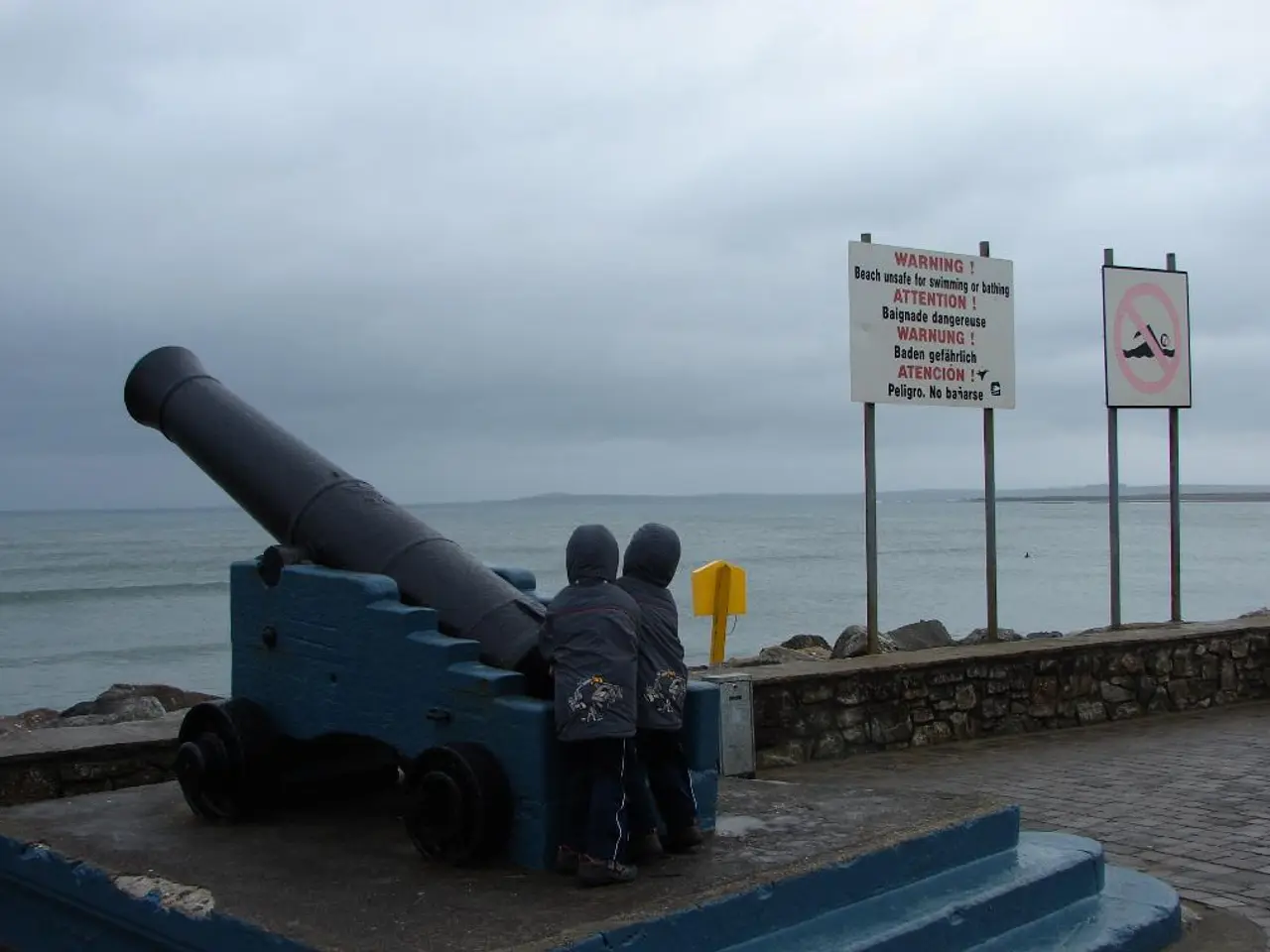United States Space Force employs novel deep-space radar system to identify numerous satellites positioned 22,000 miles away during significant test run.
The US Space Force, in collaboration with the United Kingdom and Australia, is developing the Deep Space Advanced Radar Capability (DARC) with a projected operational date for Site-1 in 2026 [1]. This ambitious project aims to safeguard critical satellite infrastructure from threats in geosynchronous orbit (GEO), primarily hostile adversary spacecraft and space debris.
DARC's unique capabilities include the ability to detect and track small, moving objects at around 22,000 miles above Earth [4]. This persistent and comprehensive tracking will offer unmatched protection for vital allied satellite services and U.S. homeland security against potential threats in GEO.
The system is designed to guard against a range of threats, including hostile movement or adversary spacecraft, space debris, and small objects in GEO [1][4][5]. By continuously monitoring satellites and space objects that display threatening behavior, DARC will help mitigate risks posed by space debris and potential adversaries.
The first test of DARC took place at DARC Site-1 in Western Australia, with seven of the planned 27 antennae successfully tracking multiple satellites in GEO [3]. The successful test marks a significant step towards the system's completion.
A second DARC site (Site-2) is currently under development in the United Kingdom and is expected to come online in 2028 [2]. Once complete, DARC will consist of three separate sites spread out globally, allowing the AUKUS security partnership to monitor GEO effectively.
As space continues to become militarized by major powers, nations are developing new technologies to secure their interests in the space domain. Notably, Russia is testing "inspector satellites" that can get close to other satellites, potentially demonstrating a counter-satellite weapon [6].
The US Space Force's Chief of Space Operations, Gen. Chance B. Saltzman, emphasizes the need for international collaboration in securing the space domain due to its size, complexity, and dynamism [7]. The development and deployment of DARC reflect this call for cooperation, as it will enable the US, UK, and Australia to work together to secure the space domain.
Northrop Grumman, a company involved in DARC development, states that the new radar system will enable tracking of potential threats to U.S. homeland and allies in GEO [4]. This capability will provide a strategic advantage at a scale never before achieved in global space domain awareness.
Site-3 for DARC will be located within the continental United States, but a specific location has yet to be named [1]. As the project progresses, more details about DARC's capabilities and its role in securing the space domain will undoubtedly emerge.
[1] Space.com (2022) US Space Force's DARC Radar System to Protect Satellites, Homeland from Threats in Geosynchronous Orbit. [Online] Available at: https://www.space.com/us-space-force-darcsite-1-radar-system-to-protect-satellites-from-threats-in-geosynchronous-orbit.html
[2] BBC News (2022) US, UK and Australia to develop new space radar system. [Online] Available at: https://www.bbc.com/news/science-environment-59570936
[3] SpaceNews (2021) US, UK, and Australia Successfully Test Deep Space Radar for Space Situational Awareness. [Online] Available at: https://spacenews.com/us-uk-and-australia-successfully-test-deep-space-radar-for-space-situational-awareness/
[4] Northrop Grumman (2021) DARC: Deep Space Advanced Radar Capability. [Online] Available at: https://www.northropgrumman.com/capabilities/deep-space-advanced-radar-capability/
[5] SpaceNews (2021) DARC Radar System to Track Small Satellites, Space Debris in Geosynchronous Orbit. [Online] Available at: https://spacenews.com/darc-radar-system-to-track-small-satellites-space-debris-in-geosynchronous-orbit/
[6] CNN (2021) Russia's new satellite inspector could be a threat, US military warns. [Online] Available at: https://www.cnn.com/2021/04/26/politics/russia-satellite-inspector-threat-us-military/index.html
[7] SpaceNews (2021) US Space Force Chief Emphasizes Need for International Collaboration in Space. [Online] Available at: https://spacenews.com/us-space-force-chief-emphasizes-need-for-international-collaboration-in-space/
- The development and deployment of DARC by the US Space Force, in partnership with the UK and Australia, underscores the importance of technology in enhancing environmental safety, as it aims to monitor space debris and potential threats in geosynchronous orbit.
- In the realm of science and space-and-astronomy, the new radar system, DARC, is designed to track small objects in geosynchronous orbit, including space debris and hostile adversary spacecraft, providing unmatched protection for vital allied satellite services and U.S. homeland security.
- As nations continue to advance their technological capabilities in space, including the development of counter-satellite weapons by major powers like Russia, international collaboration becomes crucial in ensuring the peaceful and secure use of space, as demonstrated by the US Space Force's DARC project.




